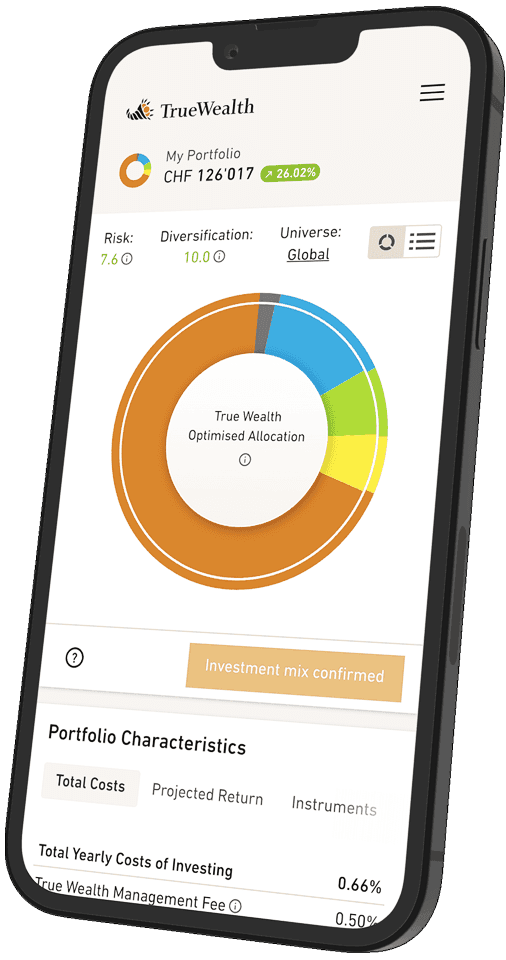
Is it possible to invest rationally?
If we all conformed to the human image of “homo oeconomicus”, we would be perfect investors. But no matter how much experience we have as investors, we are driven by emotions. The right strategy helps.
If we all conformed to the human image of “homo economicus”, we would be the perfect investors: we would have all the information, clear preferences and would always act rationally. But “homo oeconomicus” only exists in academic textbooks. No matter how much stock market experience an investor has, they will always be guided by emotions and therefore tend to act irrationally.
People like to think of themselves as rational, i.e., that important decisions are well-thought-out and backed up by collected information. However, emotions have far more influence on our behavior than we would like to believe. In science, the field of behavioral finance deals with how we act and make decisions. Our experiences and preferences in particular, but also the influence of other people on us, can influence our actions. This does not always have to be a bad thing, but when investing, it is worth at least being aware of it.
Science provides us with various explanatory models to describe irrational behavior – to a certain extent as an antithesis to the classic but never observed “homo oeconomicus”. Three selected models are presented below. The English language has a general term for this, bias, which in German can be described as partiality, prejudice, or distortion.
Bias 1 – Confirming your own opinion
You want to buy shares in a certain company. You have been toying with the idea for a long time, but you are still not quite sure whether this is really the right decision. You therefore start looking for objective information to help you make up your mind. Because with enough information, it will become clear whether the purchase is right or not. Unfortunately, this is where the “confirmation bias” comes into play, which makes information gathering more difficult. This concept assumes that people pay particular attention to information that confirms their own opinion. In the fictitious example, the person actually wants the shares, they are just looking for confirmation. They are therefore particularly receptive to information that puts the company in a good light. However, this can lead to bad purchases when investing.
The problem of confirmation bias is exacerbated by the increasing flood of information on the Internet, because no matter which share you are interested in, you will find a multitude of positive and negative articles and forecasts about the respective company. A study with the title “Information Valuation and Confirmation Bias in Virtual Communities: Evidence from Stock Message Boards” by JaeHong Park, which is well worth reading, took a closer look at the interplay between the Internet and confirmation bias. The study examined the reading behavior of users of a South Korean financial community. For example, if one of the participants was currently on the Samsung share subpage, he was first asked whether and how much he had invested in this share and what he currently thought of the share. The portal then displayed five different news items (two with positive, two with negative and one with neutral content) on the respective share. The results show that users are more likely to click on the news item that corresponds to their previous attitudes and also rate it as more relevant.
Bias 2 – The wrong numerical value
People like to use reference values to make decisions, because they help to categorize abstract things. This could become a problem with investment anchoring. This involves adjusting your own expectations to a specific, actually completely irrelevant figure. For example, you invest in a company whose shares have recently fallen sharply from their peak. The current price seems like a bargain compared to the peak. Your expectations have therefore adjusted to the high at that time. However, this is irrelevant, as a historical return says nothing about future performance. In addition, something could have fundamentally changed in the company so that a higher price is never achieved again.
Investment anchoring was examined in a study by Markku Kaustia titled “How Much Does Expertise Reduce Behavioral Biases? The Case of Anchoring Effects in Stock Return Estimates”. In experiments, students, and professionals from the financial sector had to estimate an expected performance for certain markets, whereby they were given different information on previous performance. In one of the experiments, the anchoring effect was shown as follows: Half of the participants were reported to have a high historical return, the other half a low one. The group with the low historical return estimated the future return to be much lower. It was not only the students who were influenced, but also the professionals, albeit to a much lesser extent.
Bias 3 – Dealing with losses
People have difficulty dealing with losses and do not want to admit to them. This has an impact on their investment behavior. With the “disposition effect”, you would rather keep a share in your portfolio that has recently achieved a poor price than sell it. Conversely, if you are subject to the “disposition effect”, you would tend to sell a share too soon after it has reached a high price.
Kahneman and Tversky's “Prospect Theory: An Analysis of Decision under Risk” provides an explanation for this behavior. The theory assumes that losses have a greater emotional effect on people than gains: according to Kahneman and Tversky, if you could choose between us giving you 50 francs directly or first giving you 100 francs and then deducting 50 francs from it, you would choose the first option. From a rational point of view, both options would have the same benefit, they only differ in the perceived benefit and in the individual loss aversion, which makes the action irrational.
The right strategy helps
The examples illustrate that we find it difficult to make rational investment decisions. We are also driven by emotions more than we realize when investing, and tend not to select or interpret information objectively. When investing, we therefore recommend sticking to an investment strategy once it has been selected. The investment strategy should be globally diversified and geared towards the long term. And you should implement your strategy as cost-effectively as possible.
If you don't want to take care of this yourself on a regular basis, our online asset management service will help you achieve your investment goals.
About the author

Oliver is one of the founders of Switzerland's largest online shops: the online retailer Galaxus and the electronics specialist Digitec. Together with Felix, he launched True Wealth AG in 2013.

Ready to invest?
Open accountNot sure how to start? Open a test account and upgrade to a full account later.
Open test account